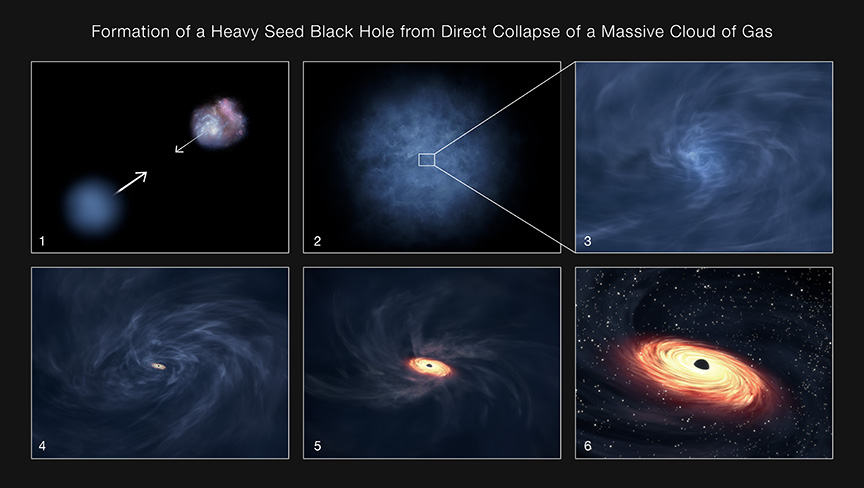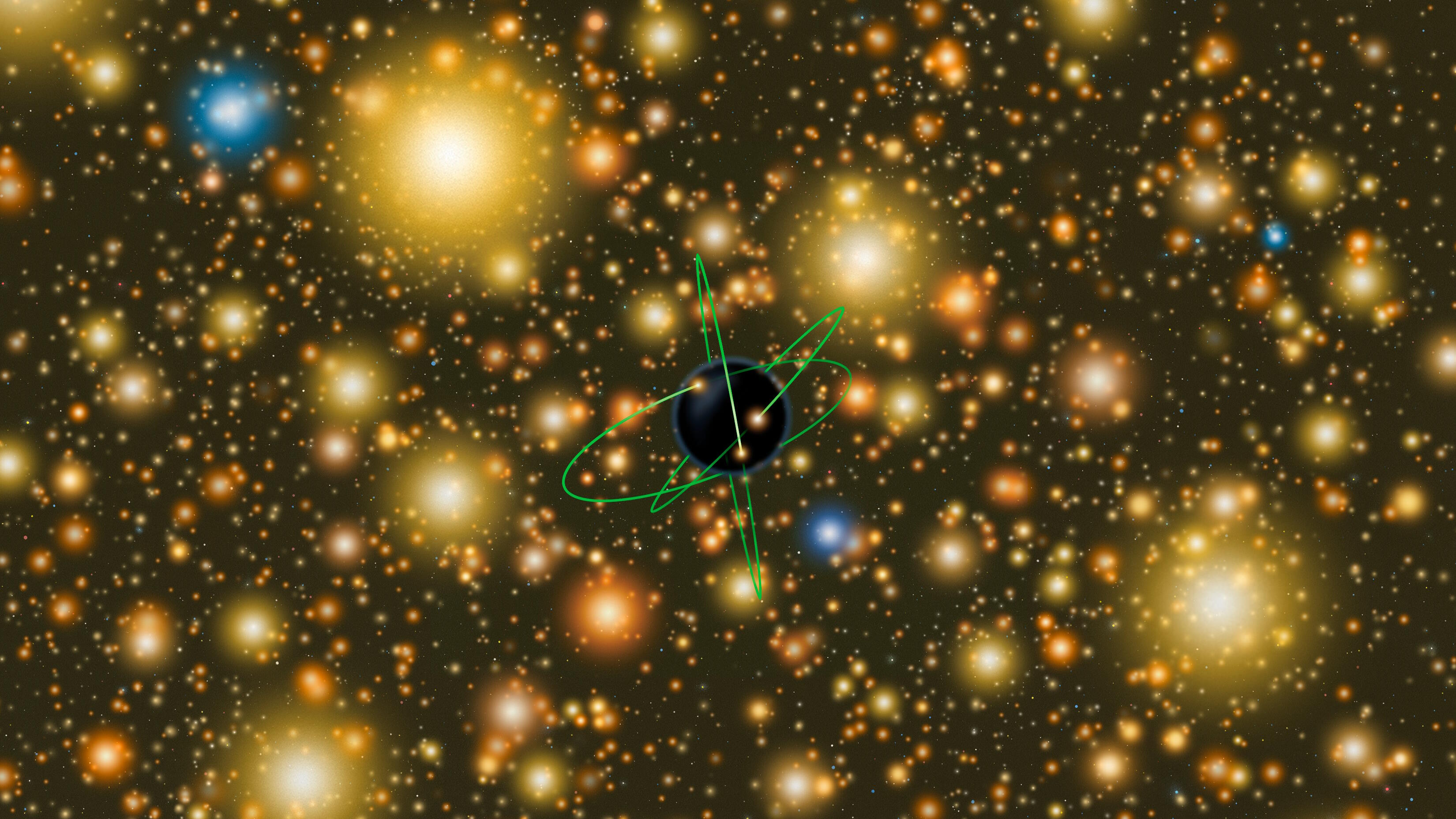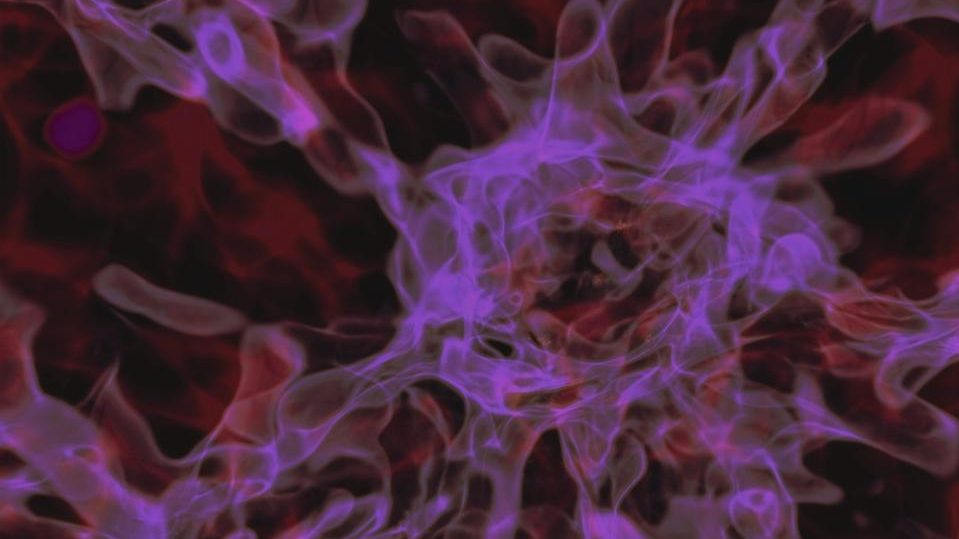MICHELLE THALLER: So Mark, you have a great question about black holes: Is there a minimum mass needed for a black hole to form and does a black hole form whenever a stellar object gets that dense?
To begin with, let's talk about the definition of a black hole. Now, most commonly people talk about black holes as being a consequence of a giant star dying. And the idea is that a star has this huge mass and that's a lot of gravity crushing the star together. Now, when the star is alive and there are fusion reactions going on inside the core, that crush of gravity is actually held up. But once the star dies and the fusion reactions go away the gravity crushes inward and there's nothing to support it anymore. So basically gravity becomes so strong in that object that not even light can escape and therefore we call it a black hole. That's probably the most classic way to make a black hole, is you actually make it from the core of a dead star that's collapsing.
But you might be surprised to learn that we actually think there are other ways to make a black hole. And the real answer to your question is that there is no minimum mass needed for a black hole, you just need to have the right density for an object's gravity to be so intense that light can't escape. The universe is very good at making black holes that are about the size of stars; it's an easy way to get them. But the universe makes black holes in other ways too. We actually think there are black holes being generated all around us on very, very small scales. There are things called high-energy cosmic rays — very, very energetic particles that slam into our atmosphere from space. These slam in with enough energy that we think they actually create tiny black holes, black holes that have the mass only a couple of atoms. There's enough energy to cram that matter together so much they form little black holes.
One of the things that we're doing at CERN, which is actually the largest particle accelerator on the earth right now, is trying to get up to those densities. CERN actually does want to make artificial black holes. Actually have two particles collide so intensely that they pop off a little black hole. And before you ask the question — no this is not dangerous. CERN does not get up to energies anywhere near what's happening in the natural world. These high-energy particles from space are much more energetic than CERN could ever do. So if anything dangerous was going to happen, it would already have happened. These tiny little black holes we think don't live very long, maybe even a millionth of a second. The whole point will be to detect them at all. All you need is a certain amount of mass and a certain amount of volume. It doesn't matter how much mass and you'll get a black hole. For example, if you could actually crush the entire Earth into the size of a ping-pong ball that would be a black hole.
But now let me tell you that things go the other way too. We know black holes that are much, much more massive than stars. There are things called supermassive black holes that are millions or billions of times the mass of the Sun. We see these in the center of galaxies all around us. And quite honestly, one of the biggest questions in astronomy right now is how do these giant black holes form? Because we see them so far away in space, we see them in galaxies that are 10 billion light years away and that means that 10 billion years ago when the universe wasn't very old you already had black holes that were billions of times the mass of the Sun.
Now, those supermassive black holes are really interesting because remember I told you the whole point is getting the right density for a black hole. It doesn't really matter how much matter there is. Intriguingly these giant black holes are actually not very dense, on average. If you had a black hole that was about 4 million times the mass of the Sun, the diameter of that black hole would be about the orbit of where Jupiter is in our solar system and the average density of it, across that whole volume, would be about the same as water.
So how is it that you could have a black hole that only has the average density of water? Aren't black holes extremely dense things? Well, this all depends on the amount of mass that you have. So if the Earth were a black hole, you would have to take all of the Earth and crush it to the size of a ping-pong ball — think about how dense that would be. That would actually be on the order of a sextillion tones within a cubic centimeter — really, really dense.
For these really massive black holes you have a lot more mass and that means you don't actually need the density to bend space quite as much. One of the ways I can explain this is to use an analogy. Say that you have a rubber sheet and in order to get a black hole you have to make the bending of the rubber really, really extreme, you have to drop something onto the rubber sheet that would bend it down. So maybe you have something that's just the size of a marble and in order to get a really good strong bend in that sheet it has to be the density of lead, really dense. Now say you have something big like an elephant. You put the elephant on the rubber sheet you get a lot of bending even though the elephant is, on average, a lot less dense than lead. So if you have more matter it will create a bending of space even if it's not very dense. And amazingly that does mean that the biggest black holes in the universe have the average density of air.






